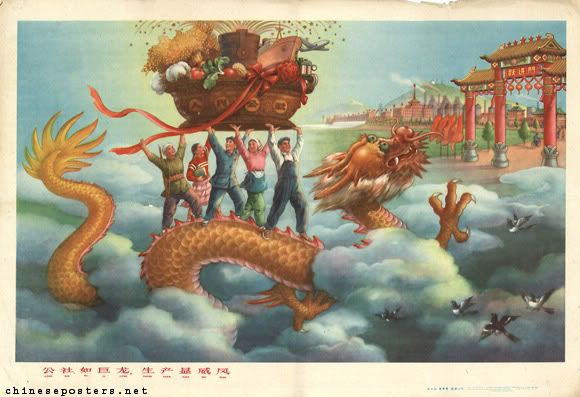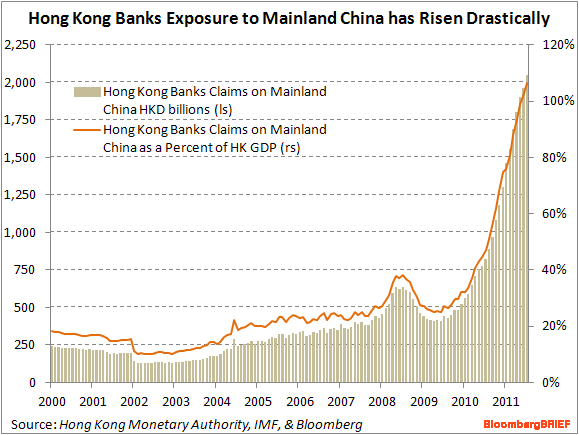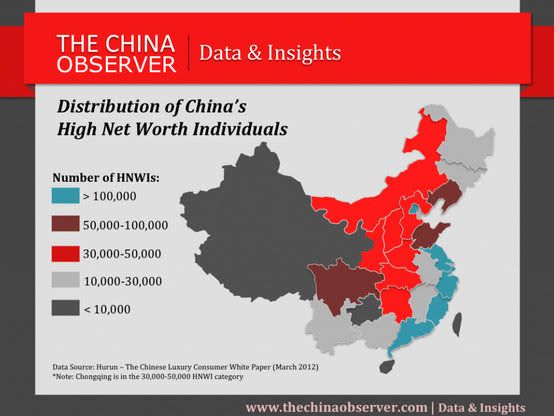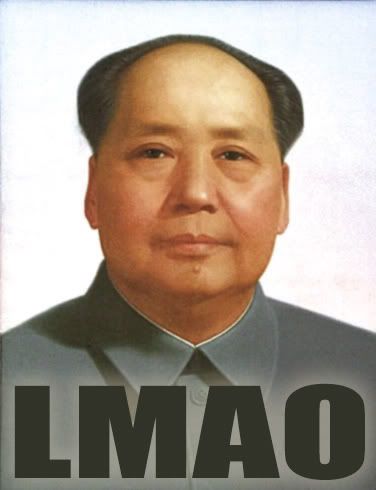The Looting of China by the Kleptokapitalist Bourgeoisie Roaders

As I set out in
The Fall of the Communist Dynasty, and a HT to John Hempton’s piece within which he contends that the entire Chinese economy is a
Kleptocracy , this week we have news from
Citron Research who reports that Evergrande Real Estate Group Ltd is ‘a deception on a grande scale’ .
Citron quote ;-
‘Evergrande who ranks among the top 5 Chinese property companies.
Our analysis and primary research reveal that: 1] Evergrande is
insolvent; and 2] Evergrande will be severely challenged from a
liquidity perspective. The Company’s management has applied at least 6
accounting shenanigans to mask Evergrande’s insolvency. Our research
indicates that a total write-down of RMB 71bn is required and
Evergrande’s pro forma equity is negative 36bn.’
What sparked Citrons interest in Evergande was the mail order doctorate the chairman claimed
from the University of West Alabama, a small college 230 miles north of New Orleans with 2300 on-campus students. Evergrande’s is one of the top 5 players in the Chinese property market that fell for its
8th consecutive month
in May. My experience with these types of matters is that small things
can be excellent markers to greater problems. Small examples of
dishonesty in one area of life are often reflected in larger
undiscovered examples in other areas of a person’s life.
Meanwhile,
Chinese Postal Bank, the country’s 7
th
largest bank in terms of assets, had its President led away by
investigators. The remarkable aspect of this story is that is that it
is not remarkable ; billionaire senior party figures get taken away for
questioning on a weekly basis.
Elsewhere , Zoomlion the concrete and industrial machine giant
is seeking Rmb140bn ($22bn) in fresh credit, fuelling fears the company is at the centre of a growing debt bubble.
Zoomlion only has a market capitalization of $12.5B and is one of the
most shorted stocks on the Hong Kong market with over 30% on loan at any
one time to short-sellers. This company certainly lives up to its
name, we know we have a bubble when a company with a business model like
this one can raise just less than twice as much as the Facebook who
raised $12.B by selling 12.3% of the company.
Zoomlion has an interesting business model, it is similar in many of ways to Caterpillar, except whereas
Caterpillar report falling sales,
Zoomlion reports astounding sales growth with a fivefold increase in
revenue since 2007. Zoomlion customers sometimes buy ten concrete mixers
when they planned to initially by one or two. They have a perverse
incentive to buy more than they need because these concrete trucks are
purchased via finance packages supplied by Zoomlion.

Then the machines can be garaged and used as
collateral to borrow further funds from other lenders. Zoomlion continues to grow while cement sales have plunged.
In May, cement output increased 4.3 per cent YoY, down from 19.2 per cent recorded last year.
Zoomlion’s new debt of $22.5B buys roughly 900,000 trucks which could
produce enough concrete (at six loads a day) to build over thirty
Great Pyramids of Giza a day .
Every sector is infected with these kinds of perverse business practices, steel traders
used loans meant for steel projects to speculate in property and stocks
, it has been common (apparently) for steel traders to secure loans to
buy steel then use this same steel as collateral to borrow funds to
invest in property development and the stock market. In many ways this
is the steel version of the Zoomlion model. A fundamental foundation of
any lending market is the ability of the lender to ensure title and
guarantee ownership of collateral.
There is $400B in debt spread across the steel market, this debt
simply can’t be serviced even with more stimulus, a fall in the price of
steel could render much of the market segment insolvent. The money is
being funneled to mainland banks via Hong Kong then it leaves via Macau
casinos.

There are dissenting opinions that China has a problem. Even though
Chinese PMI is falling at a faster rate than at any time in the last 3 years .
Michael Pascoe tells us it is only the economically illiterate that would read this data unfavourably.
Despite Michael’s assurances that everything is super ok, a falling
PMI is yet another signal of prices and orders falling right throughout
the Chinese economy . Pascoe is typical of the highhanded media
economists who will chant CCP propaganda all the way over the
edge.
Pascoe leads cheerleaders against American exceptionalism, all the
while embracing the Chinese variety with both arms and few questions.
One of the core elements of the Russian revolution was the Bolsheviks
expropriating the capitalist assets using them to fund the revolution.
In communist vernacular of the times, it was referred to as the
“expropriation of the expropriators”. This term originally belongs to
Marx and provides an effective finale to the first volume of his
Kapital:
The monopoly of capital becomes a fetter upon the mode of
production which has flourished alongside and under it. The
centralisation of the means of production and the socialization of labor
reach a point at which they become incompatible with their capitalist
integument. This integument is burst asunder. The knell of capitalist
private property sounds. The expropriators are expropriated.
All revolutions have class and economic matters at their core.
Ironically, the difference in a future Chinese collapse is that the
expropriators in China in this cycle have been the Communist Party
political class. The CCP have become the Kleptopreneur bourgeoisie who
have expropriated from China’s proletariat (the industrial working
class), via corruption and theft from the state and state owned
enterprises.
The Ka-Ching Dynasty is responsible for the greatest looting of a nation in history.
Marx wrote that modern bourgeois society
(Capitalism) has
conjured up such gigantic means of production and of exchange, that it
is like the sorcerer who is no longer able to control the powers of the
nether world whom he has called up by his spells (Karl Marx)
The CCP ‘sorcerers’ have summoned up a political and economic nether
world that is so systemically corrupted it is in the process of
spiralling into same revolutionary physics that destroyed the original
Chinese merchant bourgeoisie that Mao overthrew.
The Chinese government has set saving rates at excessively low
levels. Overtime this takes savings from depositors and transfers wealth
to borrowers. In China this wealth is then mal-invested in projects
that have limited real economic value, in the process transferring large
amounts of worker savings to the kleptopreneur class , who then often
take the capital out of the country.
The entire Chinese economy has been captured by looters who conceal
their crimes behind fraudulent reporting. Like their corporate
brethren,they rely on fraud to continue the Communist Ponzi System.
Chinese fraudulent economic data is hiding the scale of the slowdown
and this is becoming evident right across the economy. In an astounding
example of Chinese productivity, the economy is managing to grow GDP
by 7-8% per annum but only using slightly more oil, coal or cement than
in the same period last year. Oil consumption as reported in May only
grew by 0.5% year on year at the same time as coal in Qinhuangdao is
hitting record stock piles of 9.5 million tons, which is 0.2 million
tons over the previous 2008 record. Also, thermal coal stockpiles at
utilities is up over 60% from a year ago
The current political leadership of China represents the greatest
looting of a country by the political class ever seen in history. In the
Hurun Report
released in March 2012—the richest 70 members of the government have a
net worth of $89.8 billion, an average of over $1B each. This compares
to $7.5 billion for the 660 for the US government, an average of $11M
each.
China’s Billionaire People’s Congress Makes Capitol Hill Look Like Paupers.
In a country so indoctrinated in the works of Marx, it seems only a
matter of time before the current Chinese proletariat, suffering under
extreme wealth distribution, will rise up. One only has to look at the
geographic distribution of wealth to see where the problems might begin.

Furthermore, this does not take into account the wealth held by the
families of these politicians. Nor is this corruption limited to
politicians. The military, according to
John Garnaut’s report,
has become one of the most corrupt state enterprises of all. China’s
wealth distribution is becoming completely one sided The success of
300m
Chinese who live in western level prosperity depends on the continued
exploitation and good nature of one billion people who live on an
average of $5000 per annum. This week Chinese military leaders have been ordered to report assets under the following CCP directive –
The
General Political Department, Discipline Inspection Commission: Leaders
Must Report Income, Real Estate Holdings and Investments. This is
likely to be met with extraordinary resistance. This could result in a
standoff between the CCP and the PLA , where both bodies equally riddled
with corruption struggle for the upper hand. The great
The corruption was genetically imprinted on the system from the early
1990s. Cadres (party officials) and entrepreneurs, combined to take
previously state owned enterprises during an increasingly relaxed
Chinese hybrid economy encouraged by Deng Xiaoping. Cadres were
intentionally encouraged to leave the CCP and set up businesses, many
deciding to keep both roles, becoming what was known as
Cadre-entrepreneurs.
There were sound reasons for this , letting party cadres to set up
businesses was the only way of opening up the government controlled
system. Whereas a non-cadre entrepreneur might not be able to navigate
the complexity of government support and approval, a CCP cadre had, in
the early days, all the understanding and influence to move an
opportunity forward. This paper expands further on the on the nature
of the early corruption –
Institutionalized Corruption and Privilege in China’s Socialist Market Economy: A General Equilibrium Analysis Ke Li, Russell Smyth, and Yao Shuntian.
Capital flight has started;
60
per cent of about 960,000 Chinese people with assets of over Rmb10m
($1.6m) have already begun the process of emigrating or are considering
doing so. Are the Chinese top 1% losing confidence
and taking their money out? In the article “
High
Wealth Concentration, Porous Exchange Control, and Shocks to Relative
Return: the Fragile State of China’s Foreign Exchange Reserve“, Victor Shih underlines how fragile China is to a loss of confidence by Chinas business elite.
If this business elite is predominately made up of Kleptopreneurs and
Cadrepreneurs , then capital flight might be bought on by a flight to
safety by the political class fearing a purge rather than coming about
as loss of confidence in China.

The greatest assumption that the world makes is that the CCP can
control and avoid this by implementing more stimulus. When this
assumption ultimately proves to be false then Marx’s nether world will
rise up
As Marx observed of the collapse of the Roman Empire
Originally, they were free peasants tilling, every man for
himself, their own piece of land. In the course of Roman history, they
were expropriated. The same movement which separated them from their
means of production and of subsistence, implied not only the formation
of large landed properties but also the formation of large monetary
capitals. Thus, one fine day, there were on the one hand free men
stripped of everything save their labor power, and on the other, for
exploiting this labor, the holders of all acquired wealth. What
happened? The Roman proletarian became not a wage-earning worker, but an
indolent mob
Never in history has a government at this scale , been so completely
captured by a political class intent on enriching itself, serving not
the best interests of the people but their own ends. When and in what
form the indolent mob rises up is hard to say. The reality, though, is
that the Chinese political class is losing control.
Guanxi the essential system of trust that holds the Chinese system together is breaking down, as is the
Leninist vanguard
system of controlling state affairs through the CCP. A system of
mutual trust and a central party vanguard is impossible to maintain in a
Kleptocracy.














